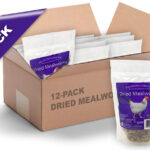
FREE SHIPPING on all supply order totals exceeding $25.00.
Pecking Order® Dried Mealworms – 12 Pack
Item #FT13
Continue Reading
FREE SHIPPING on all supply order totals exceeding $25.00.
Pecking Order® Dried Mealworms – 12 Pack
Item #FT13
Continue Reading
Chick Days occur during a brief period in spring when local feed, farm and home stores offer baby chicks — and sometimes ducklings, turkey poults and guinea keets — for sale. Nearly all stores have chicks around Easter time. With the ever-increasing popularity of chicken keeping, some stores start Chick Days in early February and […]
Continue Reading
Australorp and Black Jersey Giant chickens look and behave a lot alike. Both are good foragers, and the hens of both breeds tend to become broody and raise their own chicks. Both breeds have a bright red single comb, red earlobes, a black beak, and dark brown eyes. Australorps come in one color — black. […]
Continue Reading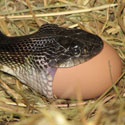
Rat snakes are often called chicken snakes because they hang around chicken coops. Their intent is to eat rats and mice, but after they’ve cleared out the rodents they look around for something else to eat. Bird eggs are often on a rat snake’s menu, and poultry eggs are no exception. Young poultry are also […]
Continue Reading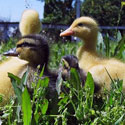
A duck’s legs and feet are made for flying and swimming, not walking. Ducks have structurally weak legs, and the most common affliction of ducks is lameness. A duck may start to limp and eventually go lame for any number of reasons. Injury Ducklings brooded on wire can get a tiny hock caught […]
Continue Reading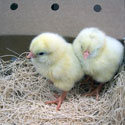
When those fuzzy little chicks, ducklings, or goslings arrive in the mail, the first thing you want to do is pick them up and cuddle them. Young children, especially, can’t resist snuggling those cute little fluff balls. The more time you spend with your baby poultry, the friendlier they will become. However, among the important […]
Continue Reading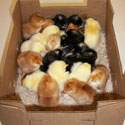
Chicks shipped by mail require a little extra TLC compared to chicks you might hatch at home. Think about how you feel after a long journey — dehydrated, exhausted, probably a bit cranky. What you look forward to most is a long drink and a warm bed. Baby chicks are no different. They suffer the […]
Continue Reading
FREE SHIPPING on all supply order totals exceeding $25.00.
Item #I13
PLEASE ALLOW AT LEAST 30 DAYS FOR SHIPPING
Continue Reading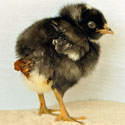
Pasty Butt — also known as pasting, paste up, or sticky bottom — is a common condition in newly hatched chicks. It occurs when soft droppings stick to a chick’s vent, then harden and seal the vent shut. If the condition is not corrected, the affected chick may die. Although pasting may be caused by […]
Continue Reading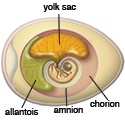
The hatching of a chick out of an egg — whether laid by a chicken, duck, goose, or other bird — is a remarkable process. Each chick enters the world with a built-in food supply that can sustain it for up to three days after the bird hatches. How does this happen? Starting on the […]
Continue Reading